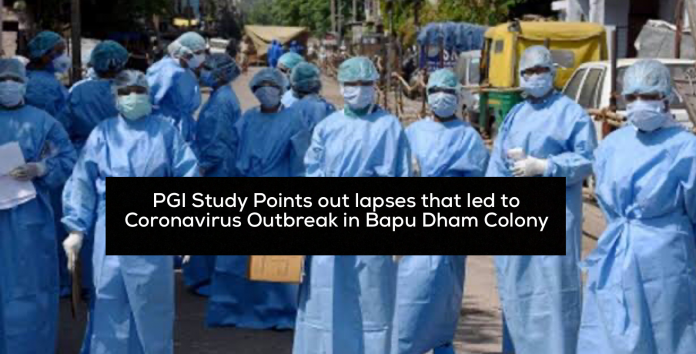in a recent study by PGIMER Chandigarh researchers published in the Journal of Primary Care & Community Health, it has been maintained that late detection of asymptomatic infections coupled with delayed isolation of coronavirus cases led to widespread outbreak in Bapu Dham Colony in Sector-26, Chandigarh.
The researchers have pointed two plausible reasons behind the outbreak:
- The person was living in a densely populated, low-income, settlement colony where physical distancing between individuals was not possible. Also he had a high number of community contacts.
- Along with this, asymptomatic infections, aggravated the problem causing late detection and delayed isolation of cases.
“Even though all efforts were made to do contact tracing of the super spreader, these numbers may not reflect the true story as sometimes the patients are not very forthcoming with their history of contact due to stigma associated with quarantine. Another important limitation was that 10 community contacts belonging to 3 families were only screened and not tested by RT-PCR for COVID-19,” read the report.
- Repeated testing of contacts of asymptomatic cases who tested negative was not done between 5-14 days. Therefore, repeat testing in such cases is recommended, since it is difficult to assess the last date of exposure in such cases and the limited sensitivity of the RT-PCR test.
“Superspreader”
The first infected case from the locality, 33-year-old man who works as a operation theatre attendant at GMCH-32 has been termed as city’s first ‘superspreader’. He tested positive for COVID-19 on April 24 and till June 1, 222 out of 293 (76%) of the city’s Covid cases had surfaced from Bapu Dham alone and the number of cases in the area touched almost 300-mark even when the strict lockdown was in force.
He had attended a small community function in the locality and a total of 125 contacts were traced, of which 65 were community contacts and 60 were workplace contacts. Testing was done for 55 community contacts and all 60 workplace contacts, out of which 34 community contacts and 6 workplace contacts were found positive for COVID-19. Therefore in total, 49 COVID-19 infections had direct or indirect contact with the index case, qualifying him as a “superspreader”.
A superspreader is someone who is more likely to infect other humans as compared to a typically-infected person.
Researchers have claimed that this case remains the first reported case of documented Covid-19 superspreader with an unusually high number of secondary infections.
Source: The Tribune, Hindustan Times
Image Credits: Google Images





















